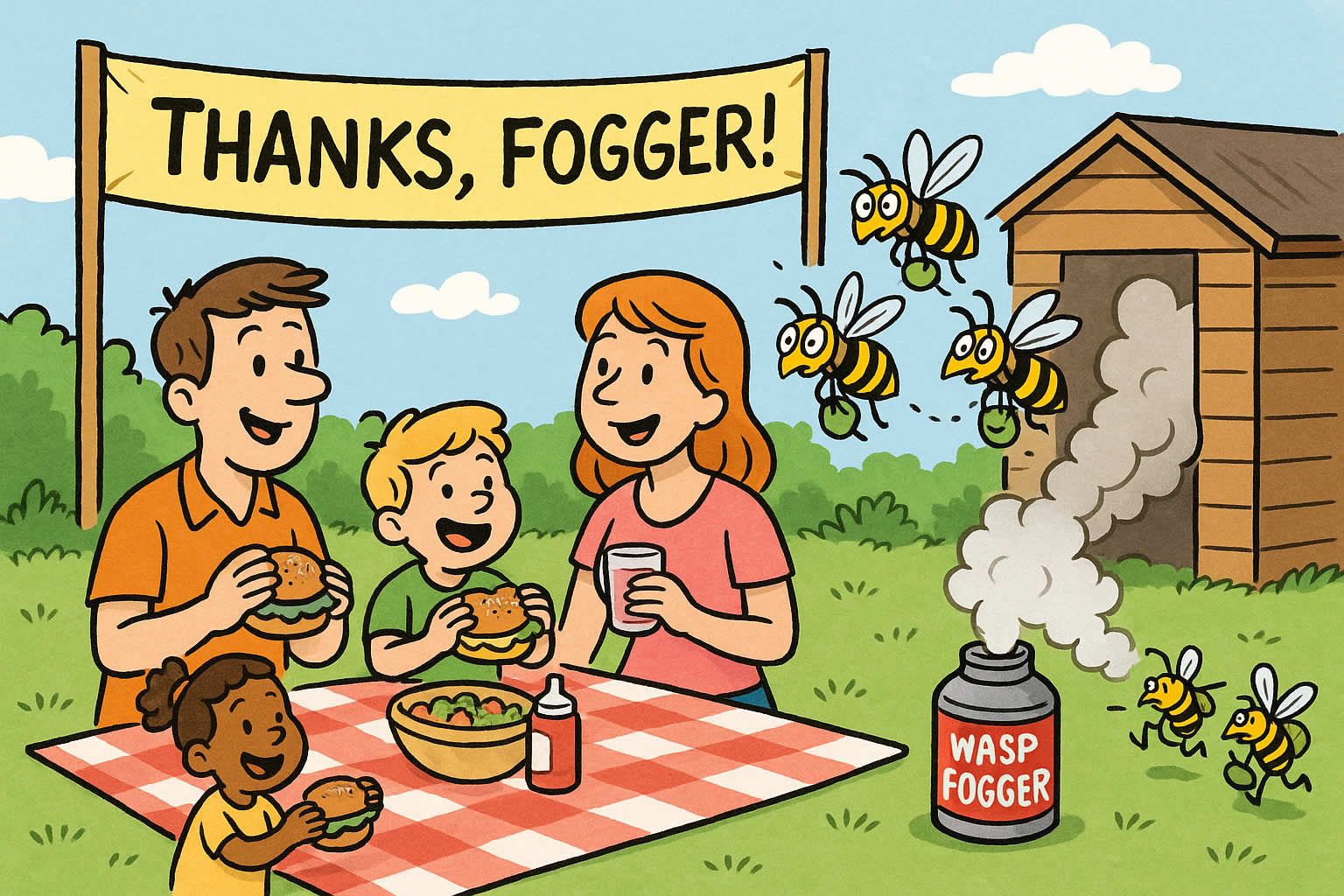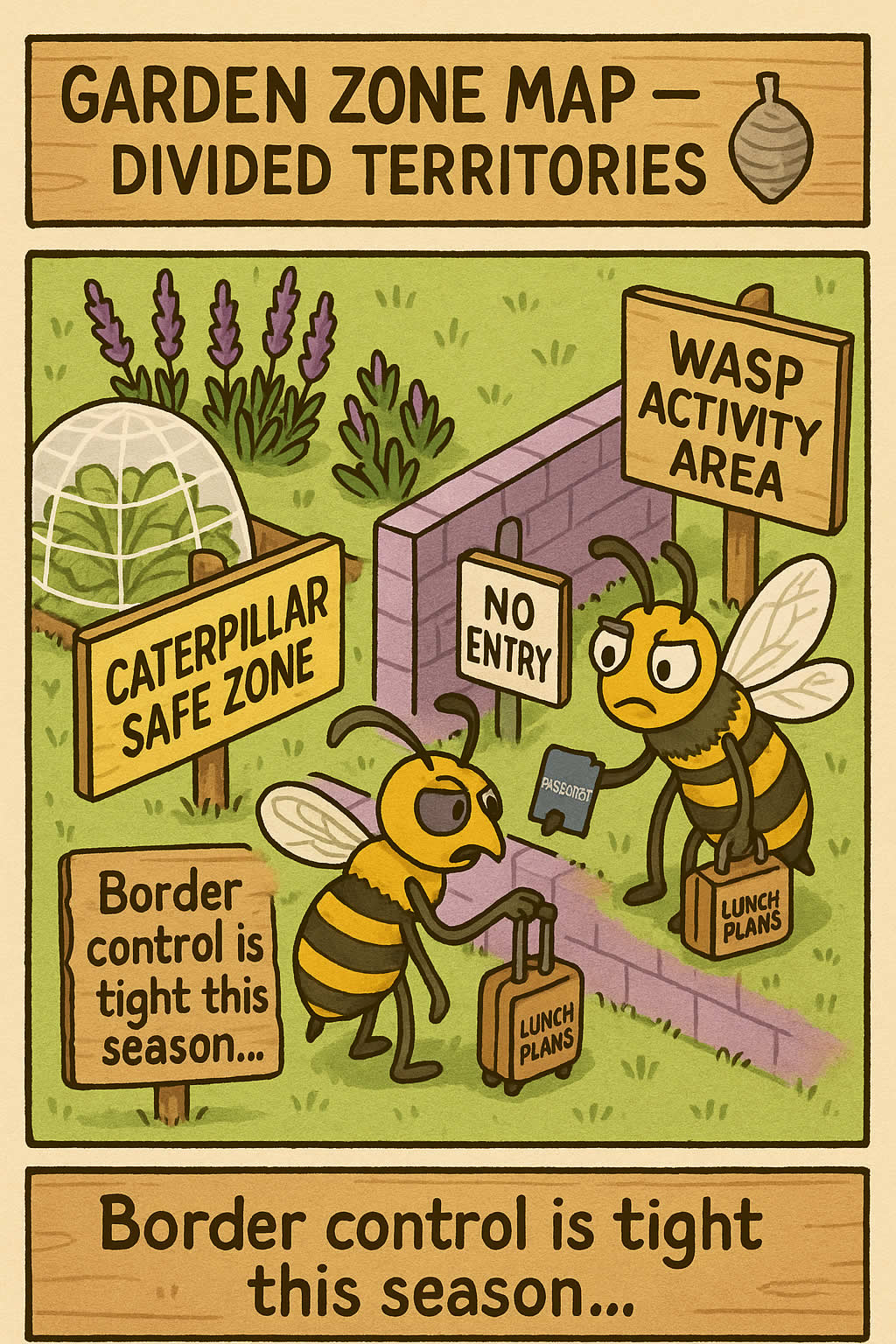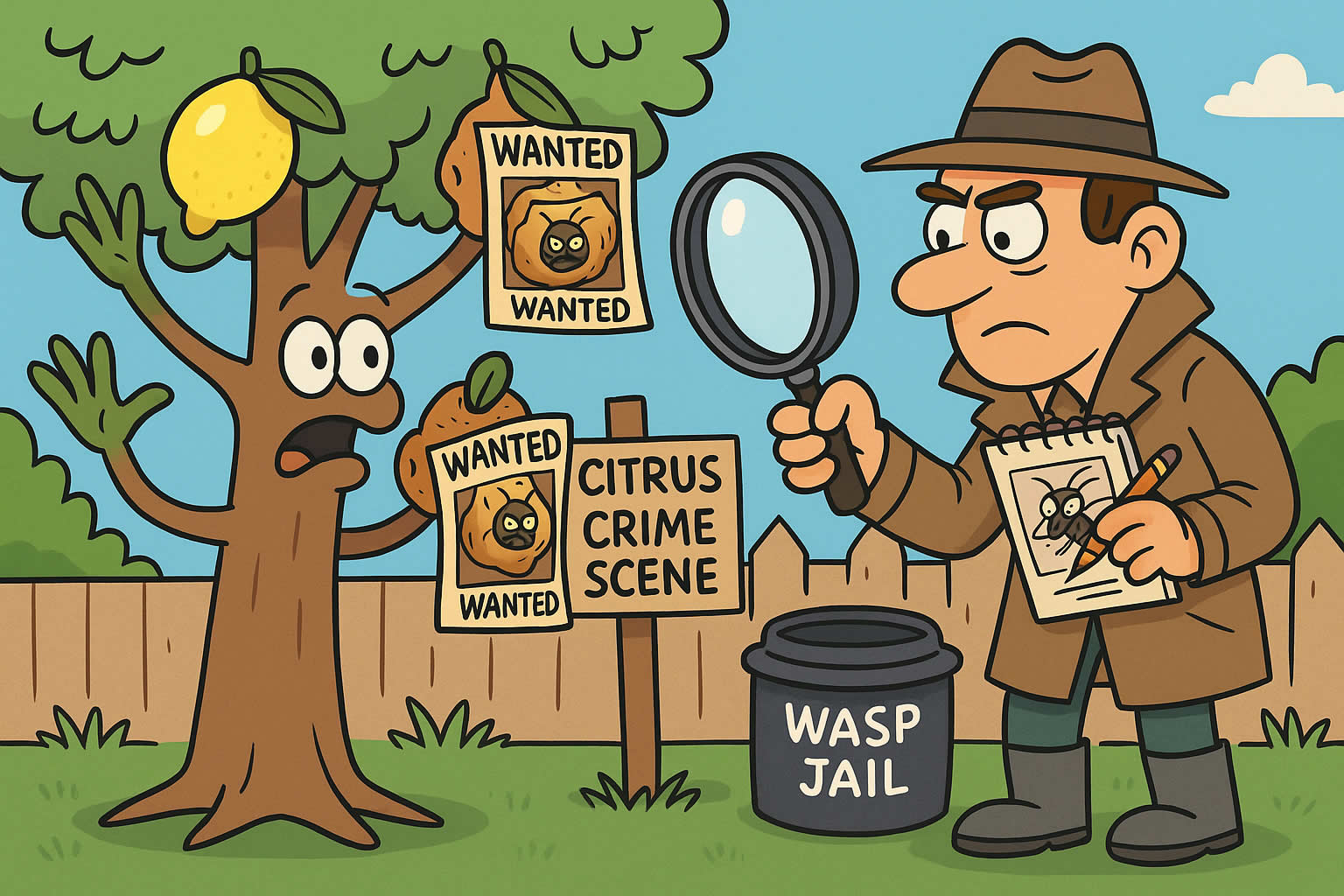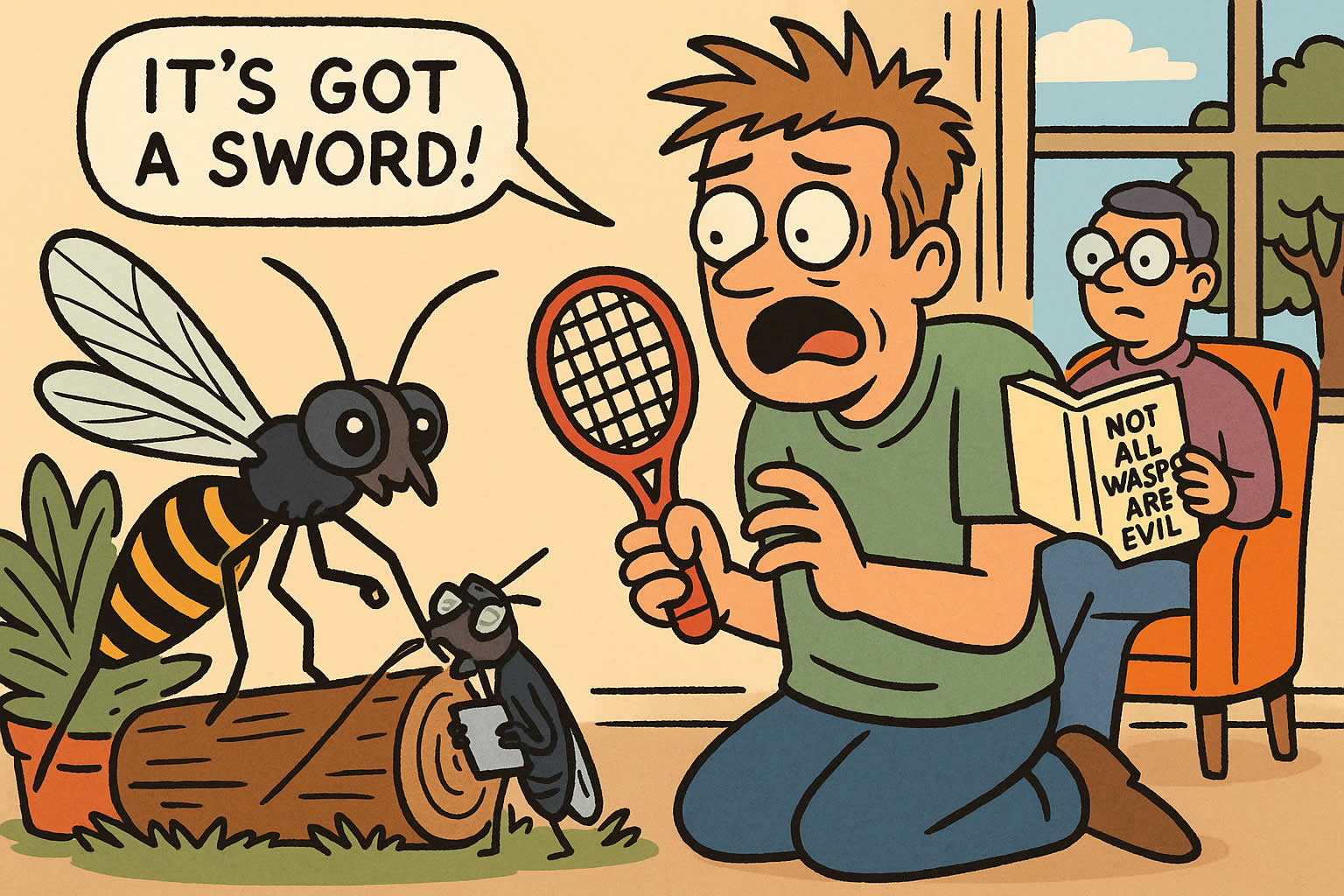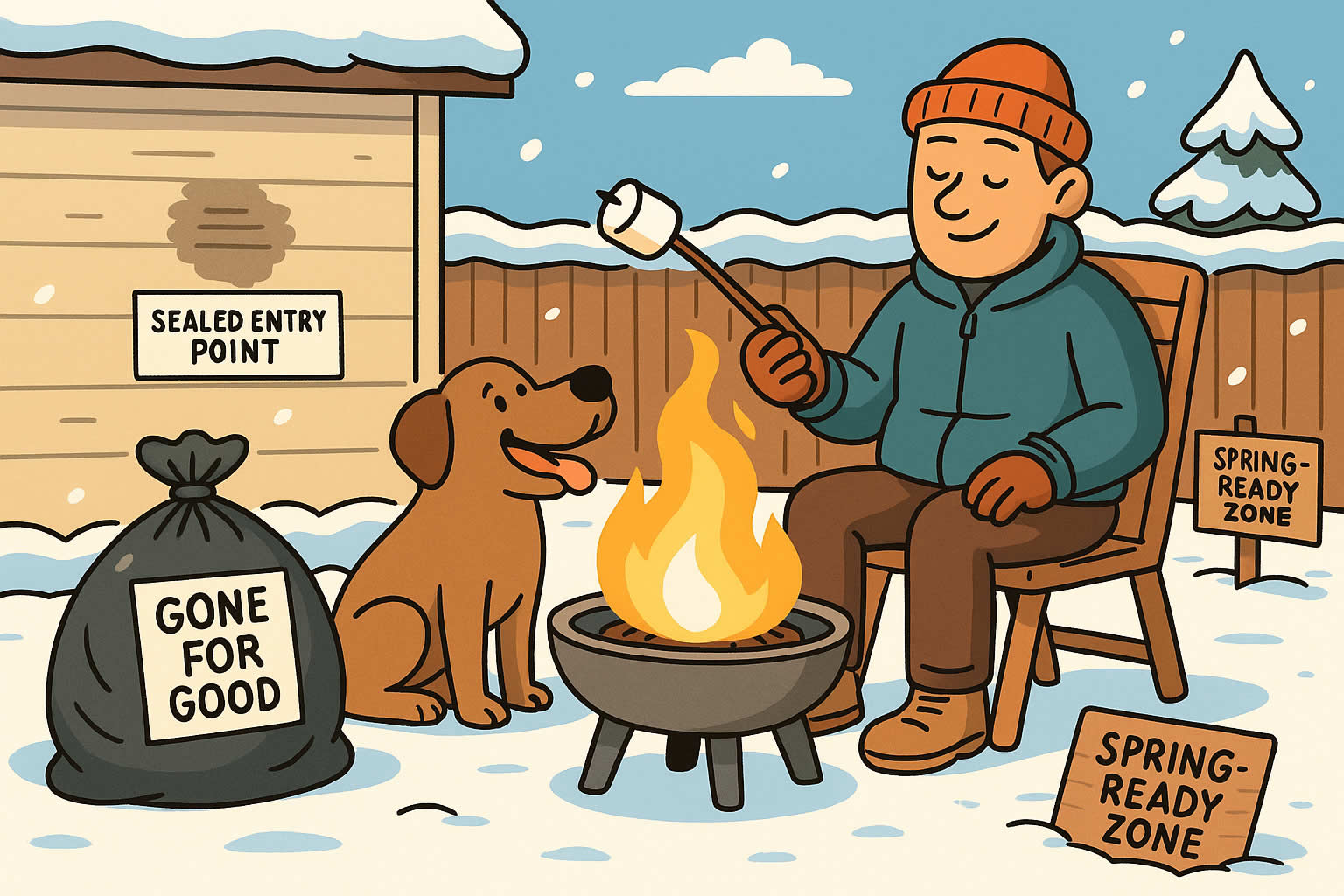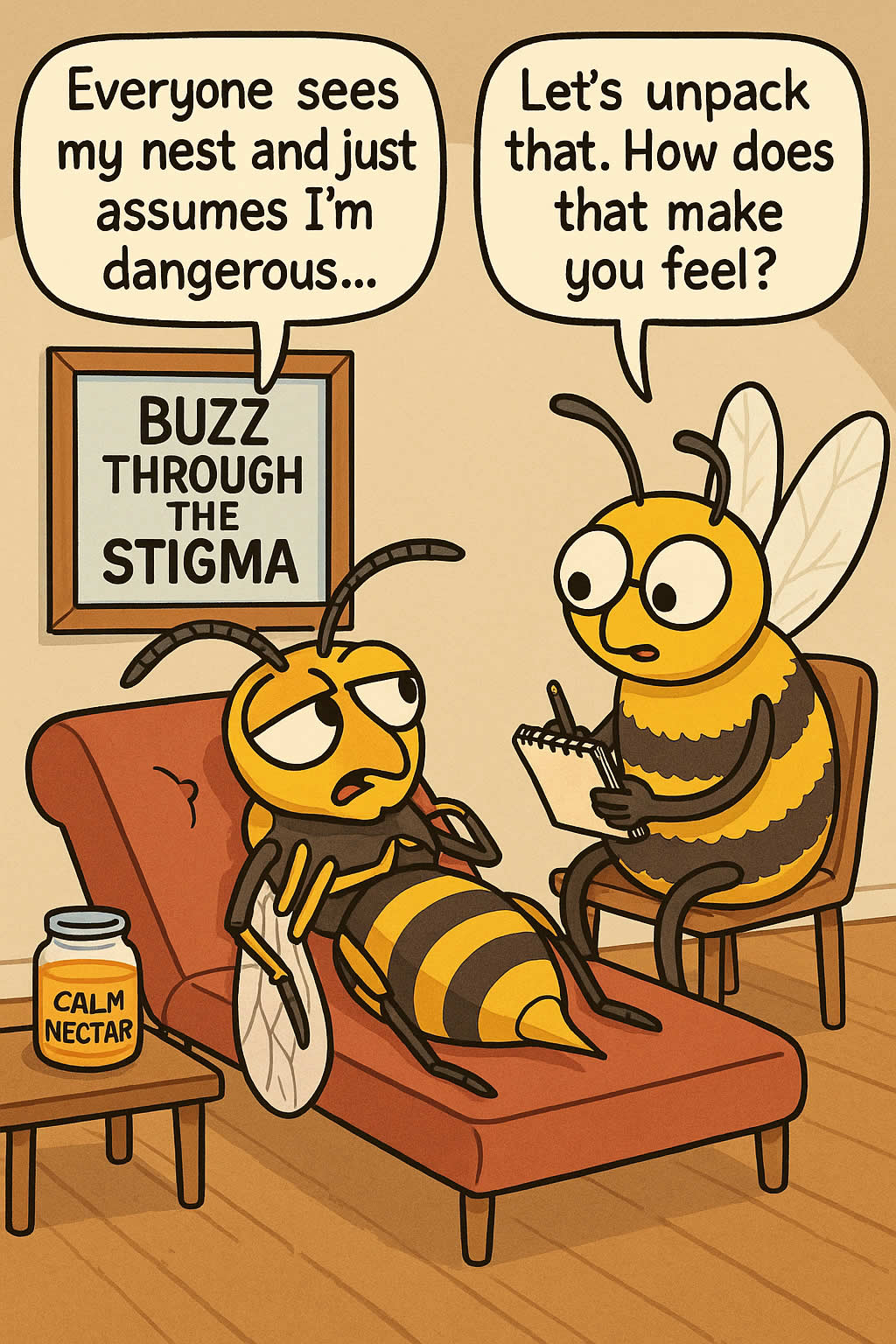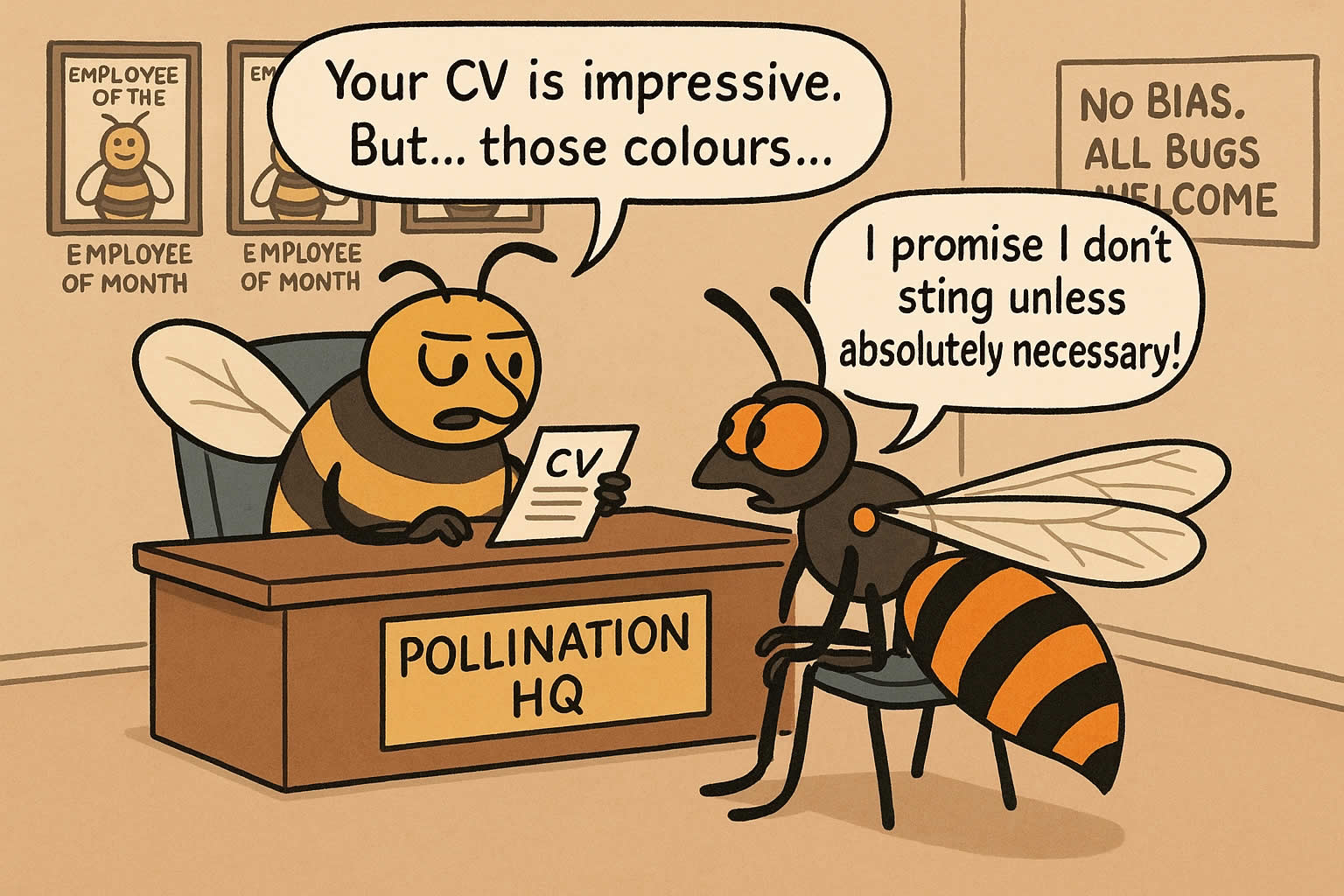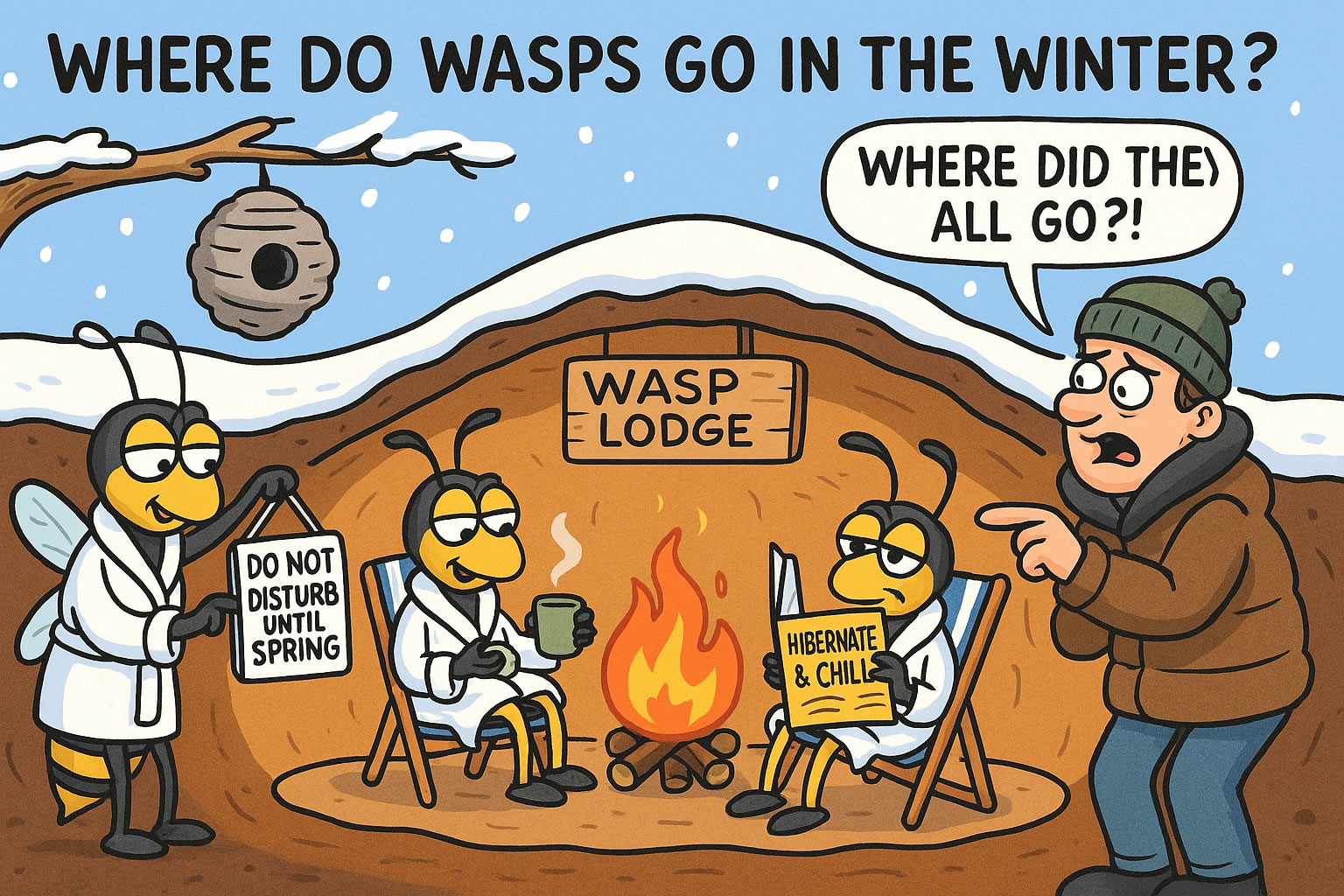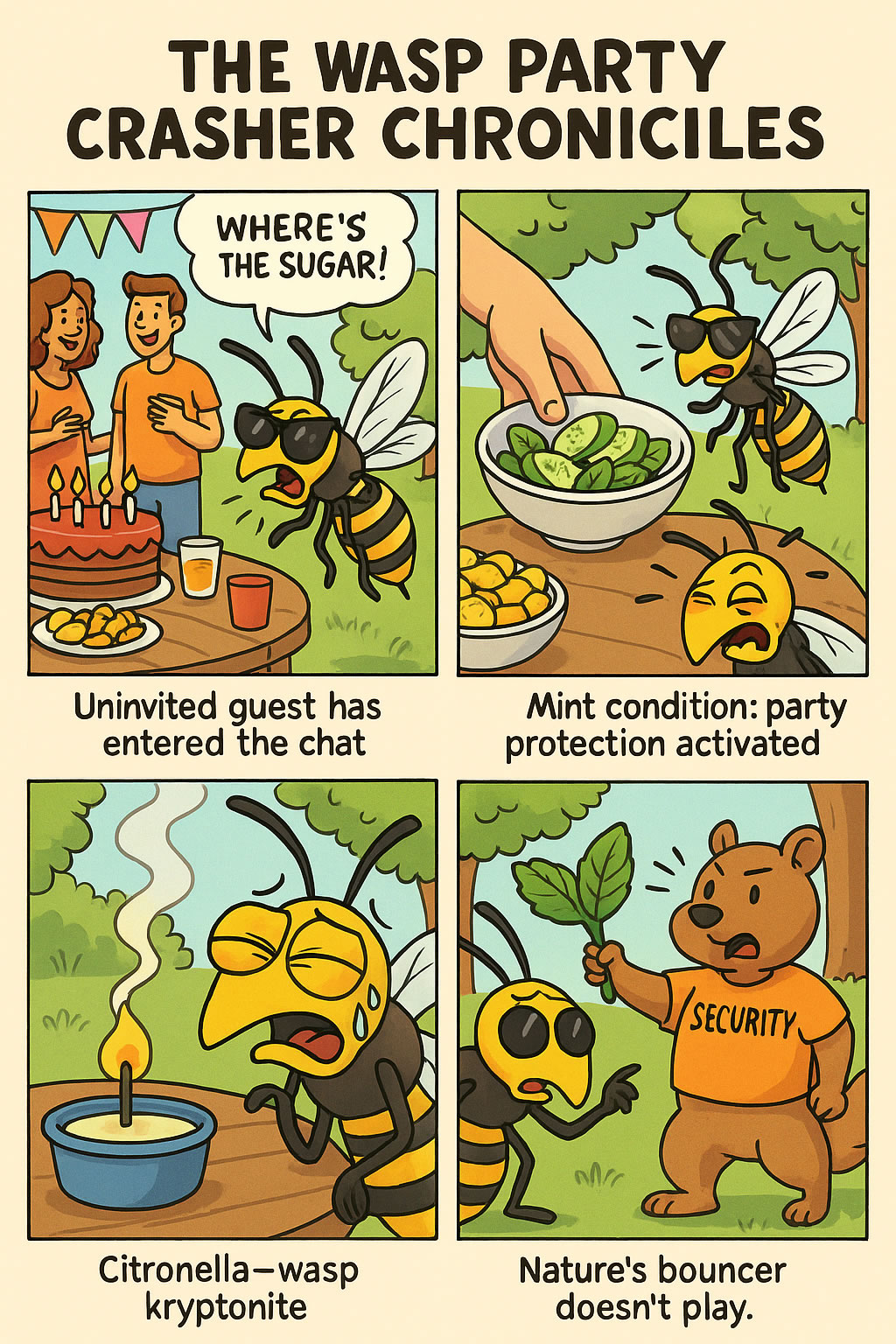Related Queries
ToggleWhen your dog gets stung by a wasp, it’s not just a painful moment—it’s a moment full of worry, too. You want to help them, but you might not know what’s safe or effective. One minute they’re exploring the garden or chasing insects, the next they’re yelping in pain or licking a swollen paw. The good news is, if you act calmly and quickly, you can manage the situation and give your dog relief.
This guide walks you through everything step by step—spotting the sting, treating it safely at home, knowing when it’s time to see a vet, and how to keep it from happening again. If you’re reading this in the middle of a sting scare, take a breath. You’ve got this.
Let’s start with how to notice the sting in the first place.
Spot the Sting Quickly
Wasp stings can sneak up fast—one second your dog’s fine, the next they’re in clear discomfort. Recognising what’s happening early makes all the difference in how quickly they recover.
How to Recognise the Signs
If your dog’s been stung, they’ll usually react immediately. You might hear a high-pitched yelp or whine, followed by sudden licking or chewing at one spot. Some dogs try to rub their face on the ground, especially if the sting happened around the mouth or nose.
Look closely. Is the area red, raised, or swelling quickly? Can you see a small dot or puncture where the sting might have gone in? In most cases, the sting will look similar to one on a person—just on fur-covered skin, which makes it slightly harder to spot.
Even if you didn’t see the sting happen, these signs are usually your clue. Keep an eye on their behaviour—change in movement, heavy breathing, or sudden anxiety could also point to pain.
Where Stings Most Often Happen
Wasps usually sting where dogs are most curious or exposed. Paws get stung when dogs step on wasps nesting in grass or soil. Noses and mouths are common targets when your dog sticks their face into a hedge, bin, or flowerbed.
Face stings can swell quickly and become more serious, especially if they affect the eyes, lips, or inside the mouth. Dogs stung in the mouth or throat are at greater risk of swelling that can block their airway, so those locations need extra attention.
Knowing where to look first can help you stay one step ahead.
Why Timing Makes a Difference
The faster you act, the better chance you have of stopping a sting from turning into a bigger problem. Swelling, pain, and even allergic reactions can all be eased or avoided by quick first aid.
Delaying treatment means the venom spreads further into the tissue. A sting near the mouth or throat can become dangerous in just minutes if not treated. That’s why it’s worth checking your dog’s breathing, gums, and behaviour as soon as you notice something’s wrong.
Even if you’re not sure what stung them yet, acting quickly gives you options and buys you time.
First-Aid at Home
Once you’ve identified the sting, the next step is giving your dog some relief. Most wasp stings are mild and can be handled at home, as long as you follow the right steps and monitor them closely.
Removing Stingers Safely
Wasps don’t always leave stingers behind, unlike bees, but check the site just in case. If you see a tiny black dot lodged in the skin, that could be a stinger. Don’t use tweezers—squeezing it could inject more venom.
Instead, use something flat like the edge of a bank card or a fingernail to gently scrape it sideways out of the skin. Be gentle and take your time. Removing it fully will help reduce pain and swelling.
If you’re unsure whether it’s still there, don’t dig into the skin—move on to soothing the area and monitor closely.
Soothing the Pain and Swelling
Apply a cold compress to the sting site. You can use a towel wrapped around a few ice cubes or a pack of frozen peas. Hold it gently against the area for 5 to 10 minutes. This helps reduce swelling and eases discomfort.
Don’t press too hard—just enough to cool the area and slow the body’s reaction. If your dog doesn’t like being still, distract them with calm words or a treat while you apply the compress.
You can repeat the process every few hours if the swelling returns.
Neutralising Venom
For bee stings, a paste of baking soda and water can help neutralise the venom. For wasp stings, a dab of vinegar or lemon juice can help calm the skin.
Dab the remedy gently onto the sting site using cotton wool or a clean cloth. Leave it for a few minutes before gently rinsing. These simple ingredients can reduce the body’s irritation response and help your dog feel more comfortable.
Make sure your dog doesn’t lick the area right after—some of these remedies can upset their stomach. Use a cone or keep them close while it soaks in.
Watch for Allergic Reactions
Most dogs bounce back from a sting with little more than a sore patch, but some can have allergic reactions that need immediate attention. Knowing the signs can make a huge difference.
Common Mild Reactions
A bit of swelling or redness around the sting site is normal. It might feel warm to the touch and look slightly raised. In many cases, this fades within a few hours, especially after applying a cold compress.
Your dog might lick or nibble at the site, so it’s worth keeping an eye to prevent it from turning into a secondary infection. Try to distract them with something soothing and monitor their energy levels.
If your dog stays relaxed, breathes normally, and eats or drinks as usual, it’s usually a mild reaction.
Signs of Severe Reaction
Some dogs can go into anaphylactic shock, though it’s rare. Signs include facial swelling, drooling, pale gums, vomiting, diarrhoea, confusion, or struggling to breathe.
You might also notice your dog lying down suddenly, acting disoriented, or becoming weak. If they collapse or seem to lose coordination, don’t wait—call the vet immediately.
Wasp stings inside the mouth or throat can swell rapidly and interfere with breathing, so treat those as urgent even if symptoms seem mild at first.
When to Call the Vet
If your dog was stung in or near the mouth, throat, or eye, always check with your vet. These areas can become serious quickly and should be seen as a precaution.
Also call your vet if your dog’s symptoms don’t improve after a few hours, if they were stung multiple times, or if they have a known allergy.
When in doubt, a quick phone call can save time and stress. Most vets would rather check early than deal with a reaction that’s gone too far.
Recovery & Prevention
Once the sting has been treated and your dog is safe, you’ll want to keep them comfortable while they heal—and ideally stop this from happening again.
Comfort and Monitoring
Dogs naturally want to lick or chew a sore spot, but that can delay healing or cause infection. If your dog won’t leave the sting alone, use a cone (e-collar) or distraction method.
Offer a quiet spot to rest, and keep their water bowl full. Rest helps the body recover faster, and hydration helps flush the venom through the system.
Check the area every few hours for any changes—new swelling, oozing, or heat could mean infection.
Using Medications Safely
Never give human medication to your dog without checking with your vet. While some antihistamines can be safe in the right dose, the wrong amount can be harmful.
Your vet might recommend a small dose of something like diphenhydramine, but only they can confirm the safe amount based on your dog’s weight and health history.
Avoid using creams or gels that aren’t specifically made for pets. Many human products contain ingredients that are toxic to dogs if licked.
Avoiding Future Stings
Prevention is always better than cure. If your dog tends to chase flying insects, try to redirect that habit. Use commands to teach them to leave wasps alone, especially during walks or garden time.
Check your garden regularly for nests—under decking, in sheds, or at the base of trees. Wasps are more active in warm months, so extra supervision during that time can help keep your dog safe.
Keep bins tightly closed, and avoid letting your dog dig or sniff around compost heaps or dead wood where nests may form.
Our Final Say!
Wasp stings on dogs are scary in the moment—but with calm, quick action and the right steps, you can help your dog recover safely. Spot the sting early. Use safe, gentle first aid. Know when things are serious enough for a vet visit. And most of all, take steps to prevent it happening again.
Your dog counts on you to keep them safe, and now you’ve got the knowledge to do just that. Whether it’s a mild sting or something more serious, you’ve got the tools to act confidently and care for them properly.
And if you’re ever in doubt—call your vet. You’ll never regret being cautious when it comes to your dog’s health.
Bed Bug Removal Isle of Wight – Flea Removal Norfolk – Ant Nest Removal Surrey

